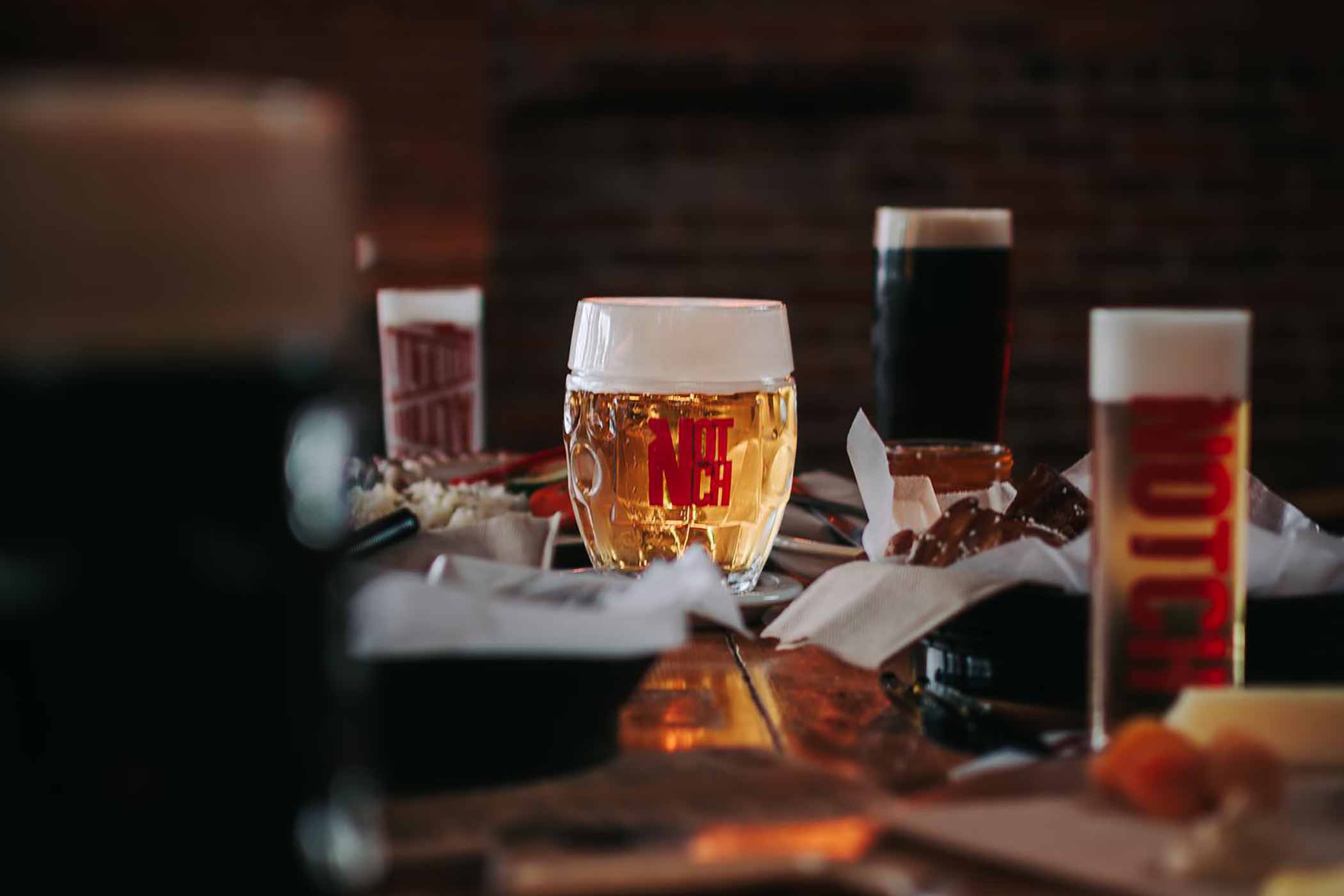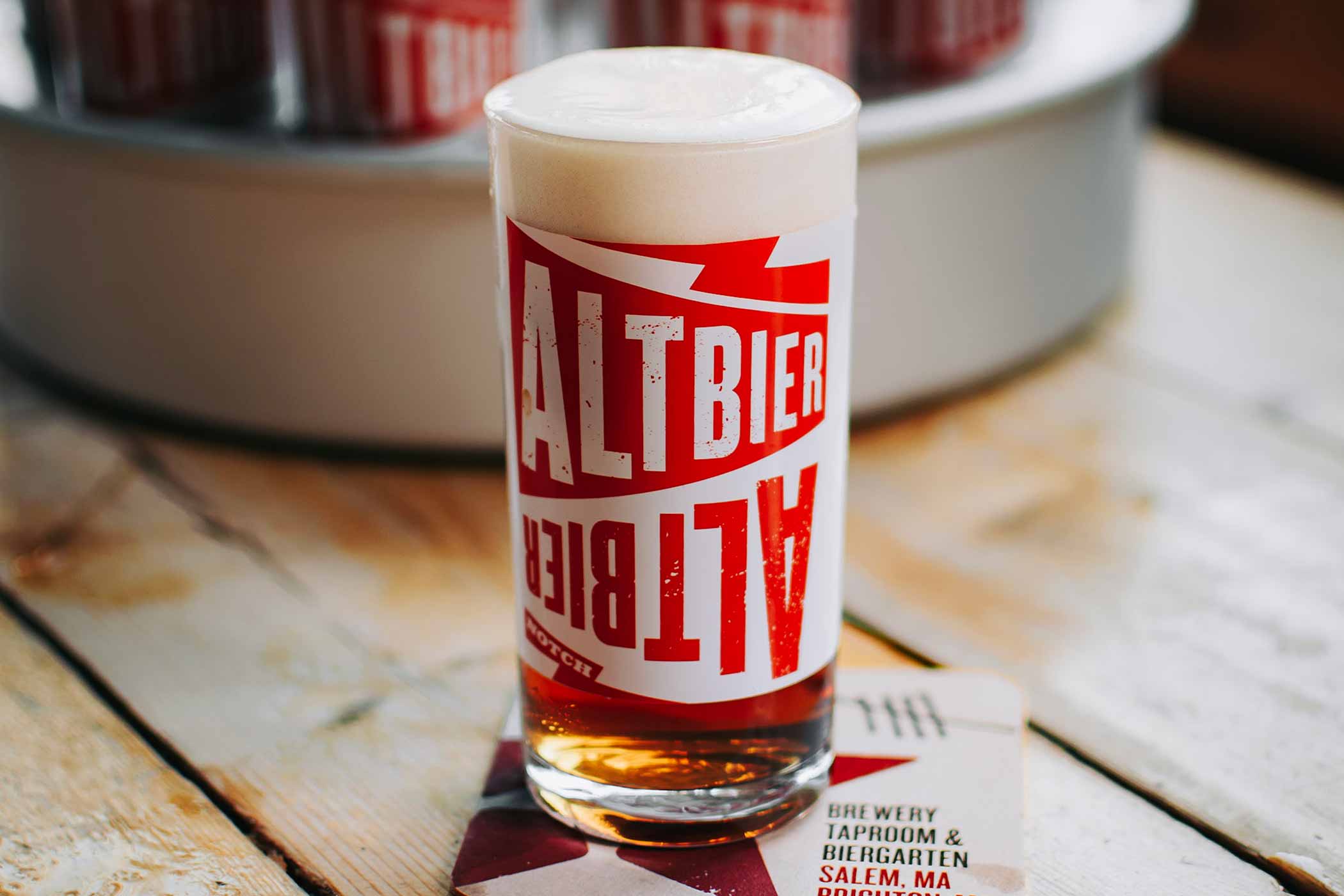#properglassware makes all the difference. For example, the drinkware matters when you’re drinking a lager, whether a German-style pilsner, helles, or Czech pale lager. Curious about what style of lager traditionally goes into which glass? While it may seem daunting initially, drinking from the proper glass doesn’t have to be super complicated. We talked to a few experts to get you the lowdown on a few classic pieces of lager glassware.
Tübinger
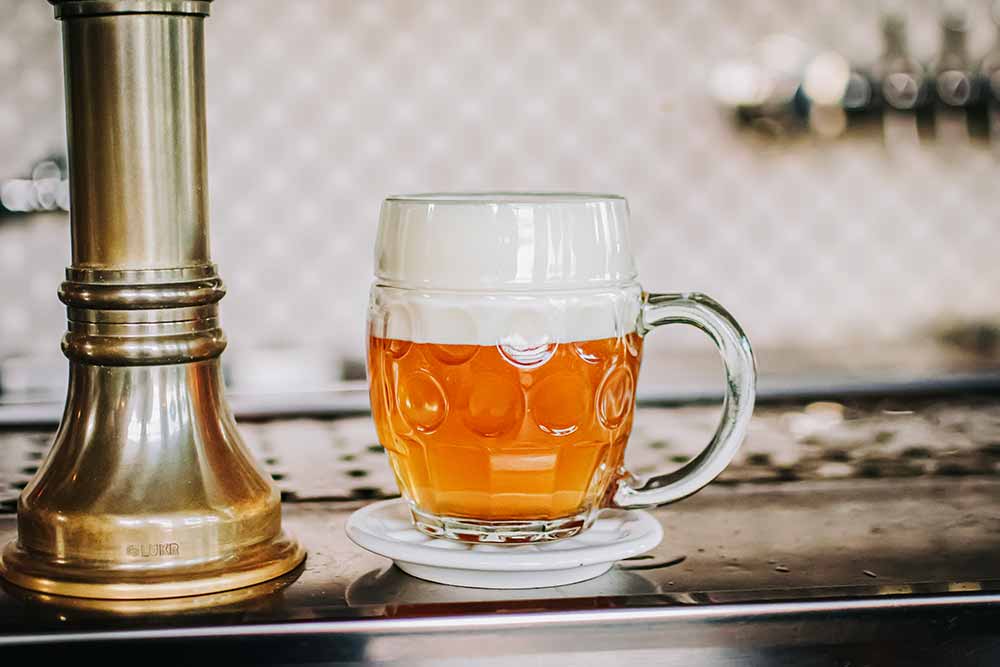
Although more closely associated with Czech beer styles, the Tübinger traces its roots back to Eberhard Karls University in Tübingen, Germany, around the late 1800s.
Today, most major breweries in the Czech Republic, such as Budějovický Budvar (Czechvar in the United States) and Pilsner Urquell, make their own branded mugs, which often come in various shapes and sizes. But typically, you’ll find these dimpled mugs (called Tübinger kugel when dimpled) in 0.3 liter (třetinka) or 0.5 liter (půllitr) sizes. Often referred to in the Czech Republic as krýgl or sklenice s uchem, these mugs all share a few standard features—a handle and thick glass to help maintain the temperature of the beer.
“We use a lot of shapes of glasses, but we prefer the mugs because when I’m drinking from this glass, I’m not warming it,” says Pilsner Urquell 2022 Master Bartender and LUKR Head Tapster Ondřej Rozsypal. “Also, the walls are thick, so it saves the temperature of the beer.”
Notch Brewing Founder Chris Lohring points out another important feature of this lager glassware, including “a curve that comes up and starts to concentrate at the top … a non-dimpled area where the foam is,” he says. “The half-liter line [shows] where the beer will eventually settle to and the rest will be foam, so there is a clear differentiation where, if you’re a customer, you’re getting the measure you paid for and the rest of foam.”
Foam is imperative to beer in the Czech Republic, where tapsters often use a side-pull faucet to create a certain amount of very wet, dense foam on the beer. We won’t go into the details too much here because we already wrote an excellent guide to The Proper Czech Pour.
This is an important distinction compared to, say, a British mug, which flares out at the top and doesn’t have anything molded onto the glass to show proportions. “You’re not giving the consumer a way to understand or a way for the server to understand the consumer is getting the [right] measure,” he explains.
Best Styles: Czech pale lager, Czech dark lager, pretty much any Czech lager.
Stange
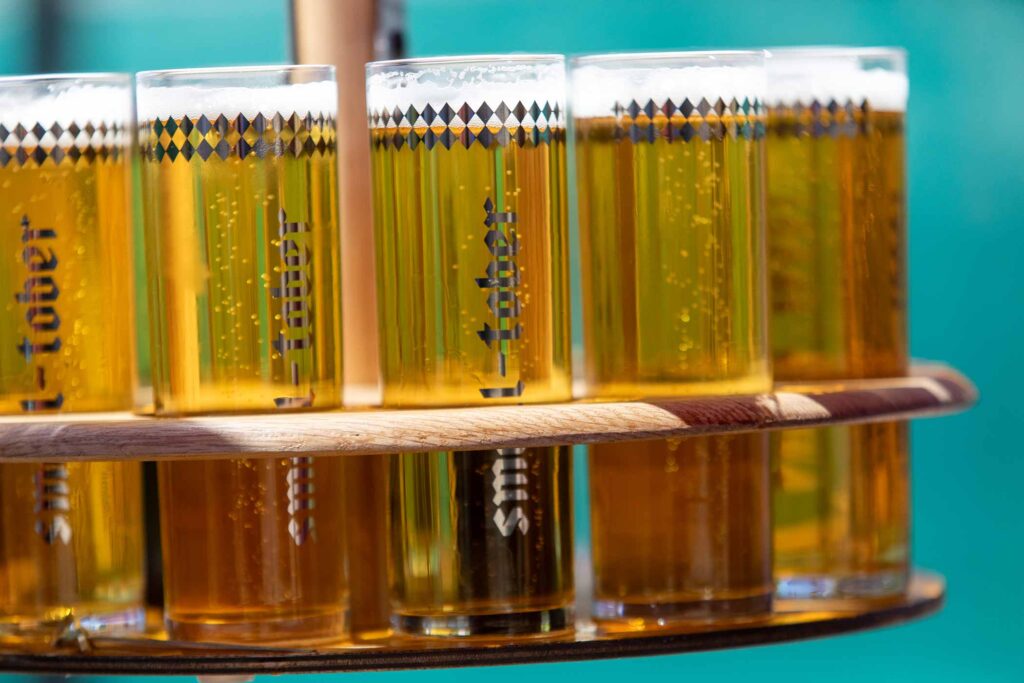
The slender glasses used in Germany serve kölsch, which we know is technically an ale but sort of straddles the line between ale and lager. Stange translates to ”rod” in English, so it seems like an apt description for these tall tubes.
This piece of ale and lager glassware often come in a 0.2 liters (6.7oz) size but can also come in slightly smaller or bigger versions. For example, in Düsseldorf, they traditionally serve Altbier (also a sort of ale-lager hybrid, depending on who you talk to) in a stange. However, it’s shorter with thicker walls and tops out at .25 liters, compared to a kölsch’s .2 liters.
“The kölsch glass is a little more delicate and taller,” explains Lohring. “Stange is German for ‘rod,’ so it is a little bit taller, has thinner wall glass and smaller volume, and Alt is just a little shorter and wider, and the glass wall thickness is a little thicker. These are subtle differences, but they’re noticeable side by side.”
Best Styles: Kölsch and Altbier.
Willi Becher
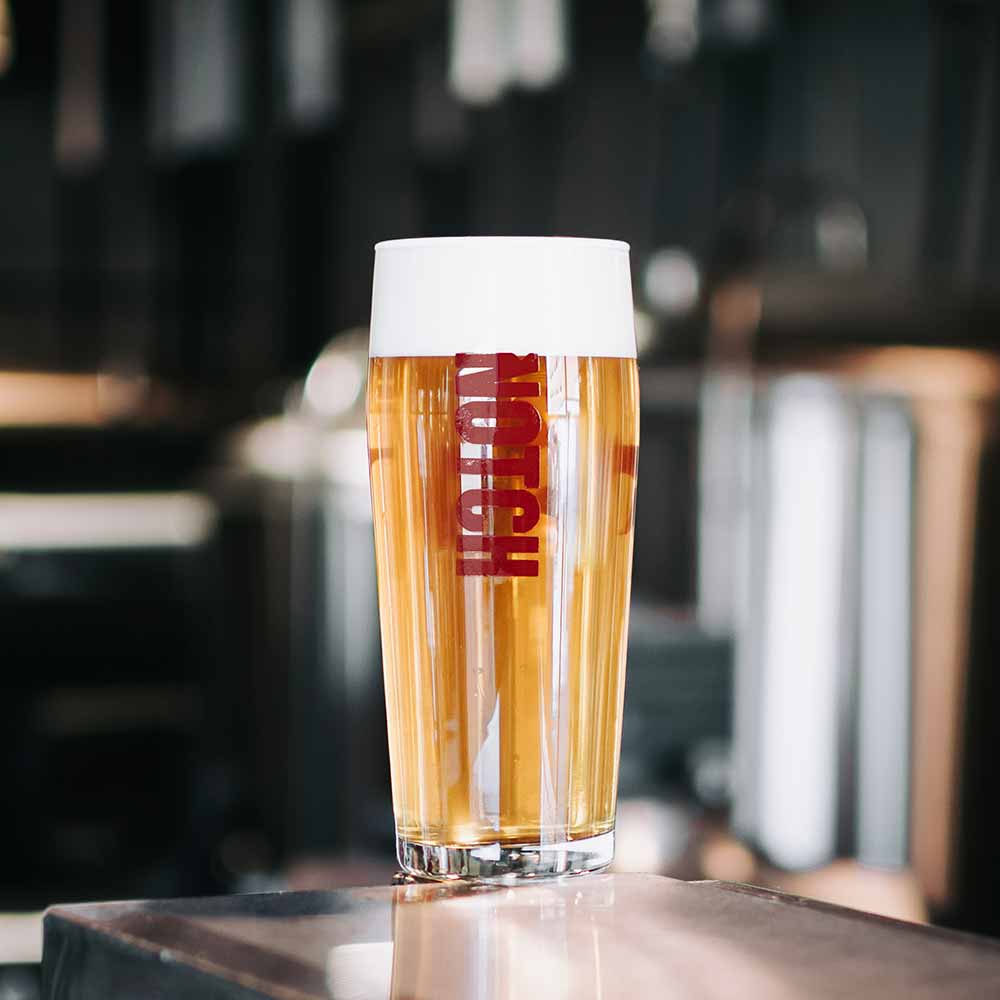
If you’re still confused about the right lager glassware to use after this article, now is the time to pay attention. Consider the Willi Becher a fail-safe; it is the best universal option for lagers.
Originally designed by Willy Steinmeier, who worked for the German glass company Ruhr Glas in 1954, the Willi Becher gets its name from its roots. Becher literally translates to “cup” in German.
This style has stayed at the forefront because the glass’s versatility makes it perfect for various beer styles. The glass flares out two-thirds of the way up before curving back toward the top, promoting excellent head and aroma.
“The Willi is the most all-purpose glass; it’s my favorite drinking glass besides the Czech mug,” shares Lohring, who falls back on the Willi Becher for most of the brewery’s German beers. “I like the way it tapers at the top and doesn’t flare out… concentrating the malt and hop aromas.”
Lohring also believes the Willi encourages a nice presentation with a good two or three fingers of foam. “I find it helps head retention and creates good lacing,” he says. “[Again,] a good all-purpose lager glass.”
Best Styles: Pretty much any lager will do.
Steinkrug
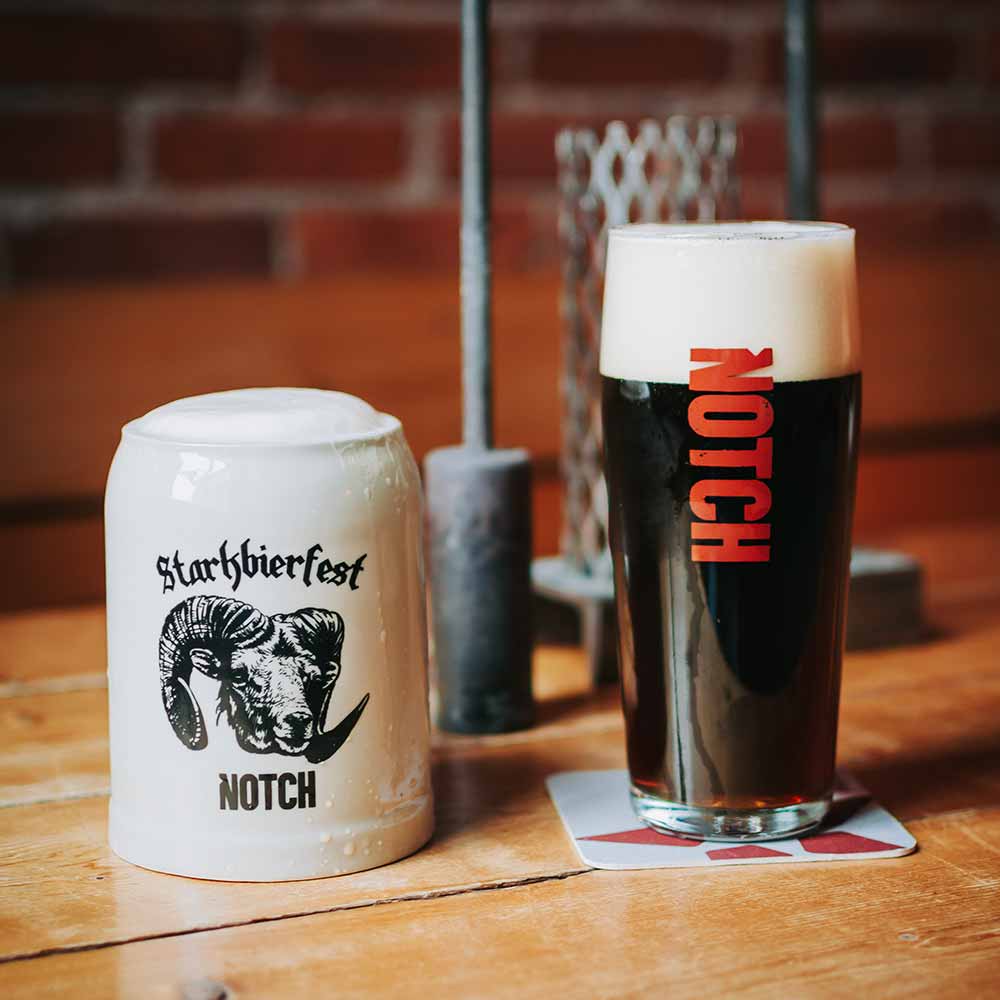
In German, stein means “stone” and krug translates to “mug.”
“I have an ongoing back and forth on steins because it’s an Americanized work of steinkrug and shortened,” says Lohring. “When it’s shortened, it doesn’t mean what it’s supposed to mean!”
We don’t really just drink out of stones, do we!?
It’s an important distinction because these glasses aren’t made of…well, glass, but stoneware.
These are nice, sturdy glasses to protect beer from elements that could harm the beer inside, such as temperature and UV light. At Notch, steinkrugs come out only for events for those very reasons. “We have pretty big beer gardens at both locations, and they’re not all under trees, so the sun is a real factor,” says Lohring. “If your beer is in the sun for a long time, it will have a negative impact, so we allow people to have a steinkrug.”
Lohring says Notch uses one-liter steinkrugs for the brewery’s mug club and half-liter versions for festivals like their annual Starkbierfest (which includes bierstacheln!).
In Germany, you’ll most commonly find Keferloher, a liter or half-liter steinkrug from the Bavarian town of Keferloh. You might even find versions with a pewter lid called zinndeckel that look mighty fine on a shelf.
Best Styles: German lagers like dunkel, kellerbier, märzen, festbier, helles.
Mass
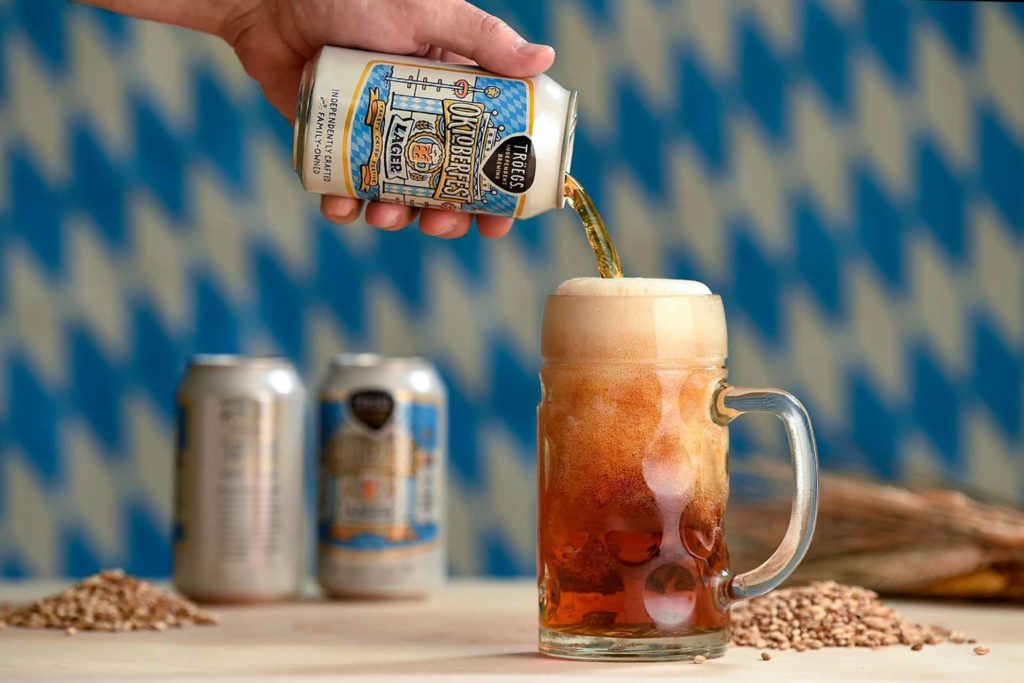
Mass, pronounced as “moss,” is probably the most confusing for Americans, who will often refer to this lager glassware as just a stein. The big, honking vessels you’ll find most commonly at Oktoberfest and in Bavarian beer gardens, the mass or maß, masskrug, or maßkanne actually refers to a measure of capacity—1.069 liters.
Today, versions accommodate more than a liter to give the extra space necessary for the perfect head retention. Much like the Czech mug, a mass includes a fill line (so customers can see exactly how much beer their money earns them) and dimples (kugel). For that reason, you might see these glasses called masskugel or Müncher kugel.
Best Styles: Ones at Oktobefest: märzen and festbier.
Pilsner
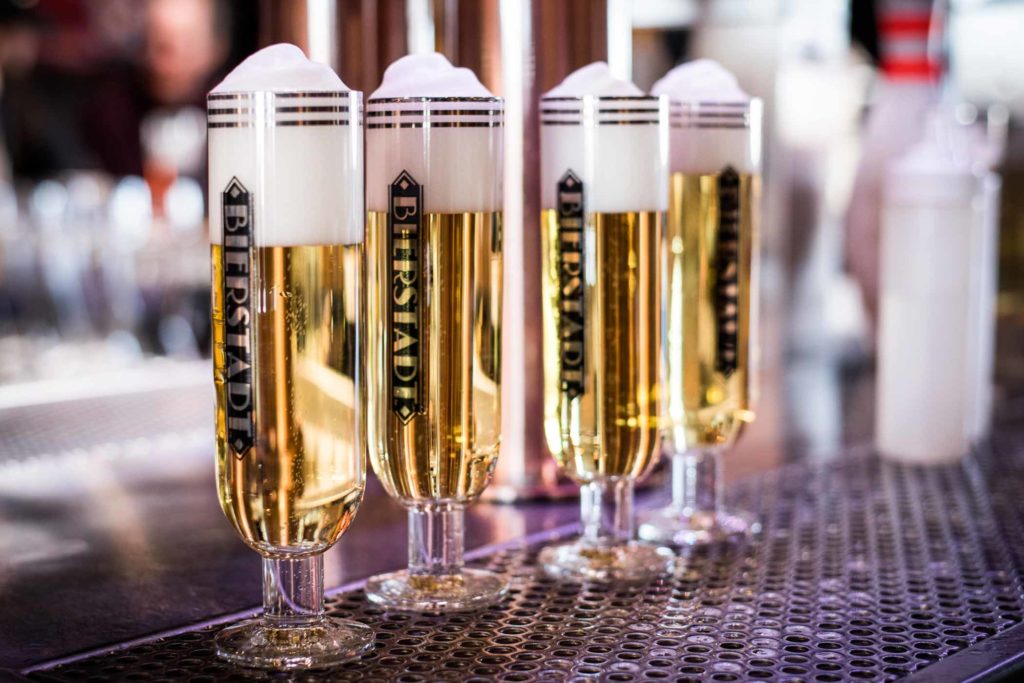
Much like the Tübinger, pilsner glasses can come in varying shapes—most commonly conical, cylindrical, or tulip (known as pilstulpe). This piece of lager glassware can also have slightly different nuances—some are stemless and unfooted, while others are just stemless.
The most common variety you’ll probably find is called pokal, referring to a glass with a base and a small stem.
But what you’re looking for with any pilsner glass is a slender shape to encourage you to drink your beer before it gets too warm.
When we interviewed Bierstadt Lagerhaus’s co-founder, Ashleigh Carter, for a piece on her Slow Pour Pils, she mentioned the importance of this glass.
For Bierstadt German-style pils, Carter uses a 0.3-liter custom-branded Sahm glass with a pilsdeckchen, a skirt around the bottom to catch the condensation as it falls off the glass. “It’s supposed to be fancy,” she explained.
A slow pour, a technique developed by Carter and her partner and co-founder Bill Nye, involves pouring beer slowly with a side-pull faucet to create layers of foam that build on top of each other. This can only be done slowly through three to four pours in the same glass over about seven minutes.
This technique creates a beautiful mountain of ice-cream-like foam pouring over the lip of the glass. Beyond the stunning presentation, the slow pour dissipates some of the carbonation, “softening the beer in a really incredible way,” explains Carter.
She continues, “We decided this one thing is really awesome, but how can all of beer together elevate itself? I don’t mean in a wine-snooty-do-you-smell-red-currants bullshit. No! Just in an appetizing, beautiful presentation way. A glass that accentuates the best parts of the beer.”
Just remember that this glass best suits German-style pilsners. Most Czech-style pilsner will traditionally be served in Tübingers.
Best Styles: German pilsner (Czech pilsner is best served in a Tübinger).

